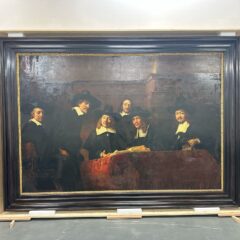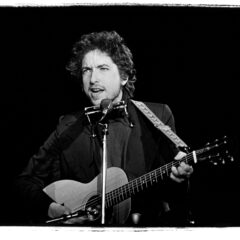AMM Artist Spotlight: Scott Kling

Scott, thank you for taking the time to chat with AMM. I understand your passion for sculpture began at a young age – why sculpture, as it more common to start with painting?
Yes, I started sculpting at the age of thirteen. I remember the exact moment when I held a hammer and chisel to carve my first sculpture, a “Female Thinker, ” which is still on display in my living room. The story behind how it transpired is as follows. When I came home from school, my mother was carving a stone on the island in our kitchen. She was a painter, ceramist, and a sculpture and fashion illustrator. Simply put, my mother asked me if I would like to join her and sculpt my own stone. To which I replied yes. Teenagers usually hate being told what to do, so I think the beauty of this story is that sculpting wasn’t forced upon me but was offered to me. A single invitation from my mother set the stage for a lifelong passion to sculpt.
Now almost 50 years later, my signature as an artist continues to combine the abstract, the figure and anthropomorphic forms defined by simple lines, curves, colors and compositions. I am classically trained, and sculpt in the tradition of Michelangelo. My love of marble drives me to find unique stones from quarries around the world, which bring inherent beauty to my art, even before touching chisels to the stone. I also sculpt in wood, clay, and cast limited editions in bronze, but my true love is bringing stone to life.



Which artists or movement have had a pronounced influence on your work?
The influence of my artwork dates back to the first known sculptors on earth 5000 years ago in the Cyclades. I am also inspired by classical and modern art sculptors from the late 19th century to “School of Paris”, including Rodin, Degas, Matisse, Modigliani, Brancusi, Noguchi, Arp, Archipenko and Zadkine.
Below a recent sculpture, “Cetacean” (2019), where I pay homage to Brancusi, exhibited at the Grand Palais earlier this year.

“Cetacean” is carved from a rare piece of Belgium Black Marble. Since marble is made of coral reef, pressurized and heated over millions of years, the essence of this stone is from the seabed.
This sculpture should be viewed from all angles. It can revolve 360 degrees on the dowel inserted into the base.
I created Cetacean by letting the stone speak to me. I carved the marble without any pre-conceived idea of what would manifest. However, very soon into the process I felt there was something aquatic about the abstract pattern in its veins. There were natural waves of color and design. So I just followed the stone’s natural lines until it felt complete.
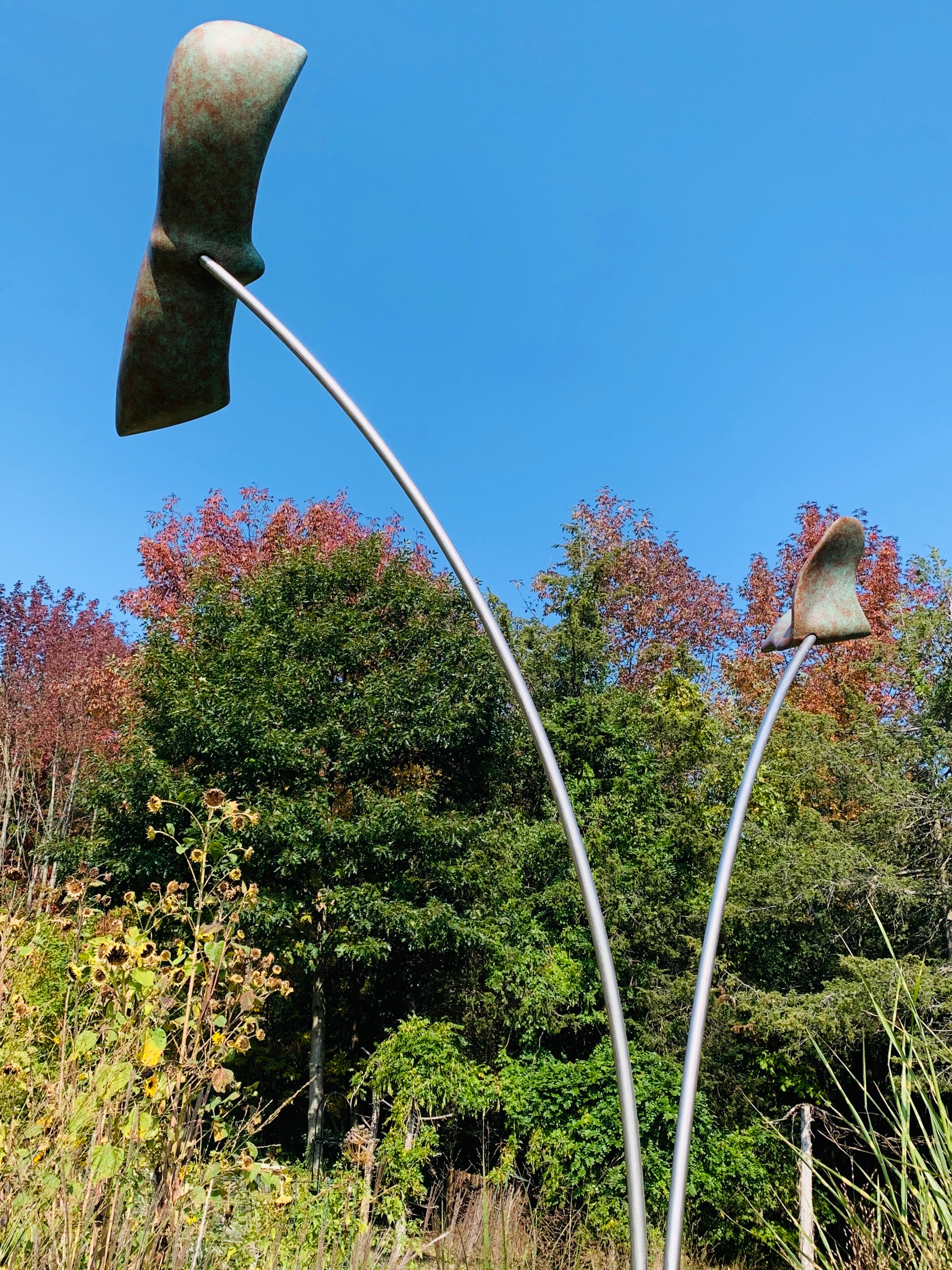
“Birds in Flight” (2020) is a celebration of flight and freedom inspired by Brancusi’s “Birds in Space.” My abstract interpretation of the bird theme is hand carved in Utah Peach Alabaster and then cast into bronze. The sculptures were recently installed at a client’s home in the Champlain Valley of Northwestern Vermont. The sculpture’s stand are 10 and 12 feet off the ground, and they are meant to blend into the natural surroundings, changing with the winds, light, and seasons.

Elegant Century Art, a fine art dealer with collectors around the globe, currently have potential clients in several European countries who may be interested in purchasing additional bronzes of “Birds in Flight.” Through a brainstorm with Steven Zynszajn, ECA’s director, we’ve recommended that the next edition be a “Flock of Birds” composed of multiple elements, which would be placed in a sculpture garden at different heights and patterns, creating a tremendous visual impact.
These “Birds” do appear to float and soar through the air. As a continuation, what is your relation to dance and ballet, both personally and as an artist?
My relationship with the dance world dates from my student days at Connecticut College, which has one of the best dance programs in the country. Many art students, including myself, would go to the dance studio to draw dancers moving across the floor to get ideas for sculptures. Mentors such as Degas and Noguchi were also greatly influenced by dance; the latter collaborated with Martha Graham.
My collaboration with modern dance actualized when I co-produced a dance concert in 1985 at the Merce Cunningham Studio. There was a dancer who mesmerized me. She carved space like a moving sculpture, with a grace and fluidity that swept me off my feet. At a cast party following the concert, I met Cynthia Fuller, who I married 2 years later. Ever since, Cynthia has been a significant collaborator to choreograph the forms and shapes that I capture in my sculptures. She is my muse and life partner, and a primary source of inspiration for the Human Landscape collection, which has over 20 sculptures.
The images below illustrate the creative process from a photography shoot which Cynthia and I choreographed for the Human Landscape collection. The centerpiece of the collection is the abstract figurative sculpture called “Venus.” The first study took the form of a 6” maquette, as an abstract torso, which emphasizes an accentuated the hip. The shape of the hip movement has become a signature of the Human Landscape collection.
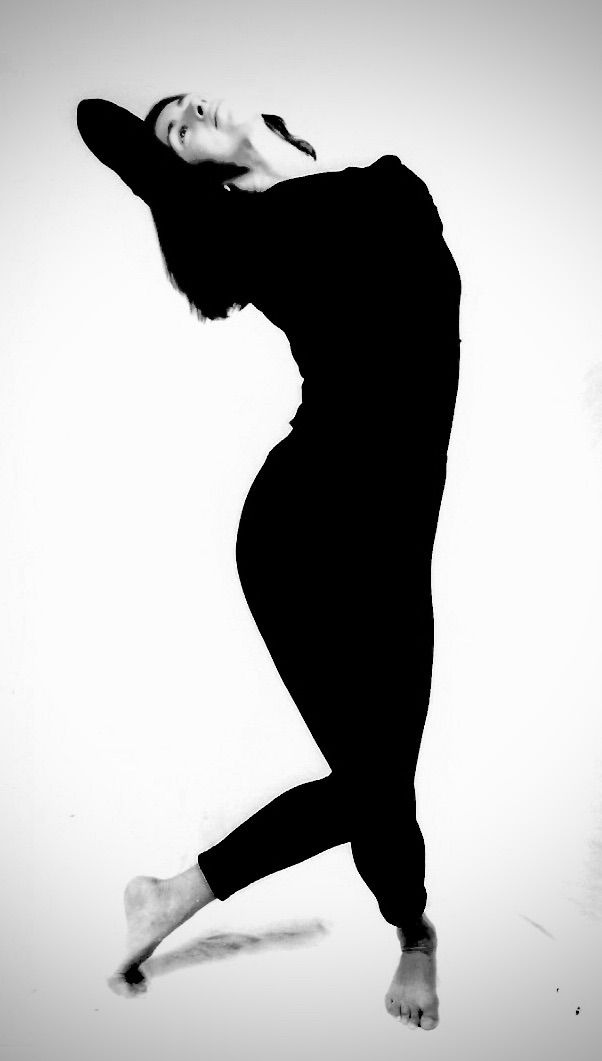

After I completed the 6” maquette, I then scaled it to 30” in wood and then cast it in bronze. The “Venus” in bronze was selected by the Société Nationale des Beaux-Arts for a show at the Louvre Museum.

From the Venus in bronze I proceeded on to Pietrasanta in Italy where I selected a block of Statuario marble from the Alpuna Alps.

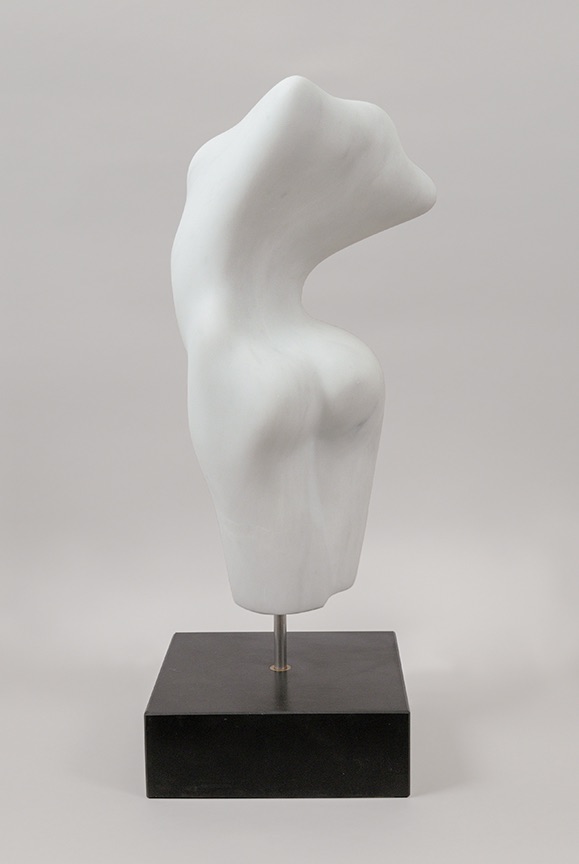

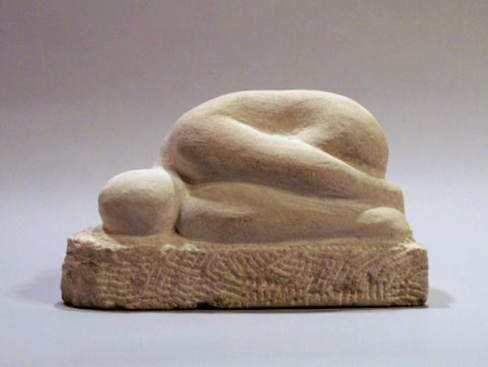
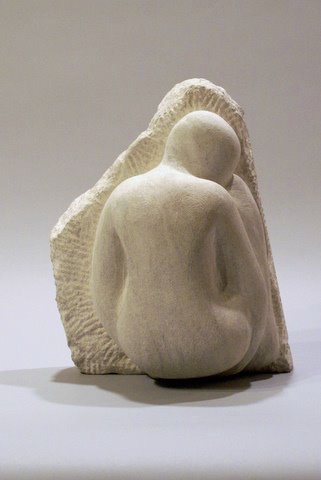
Scott, it appears that you travel to France regularly. Do the French appreciate your affinity for their artistic tradition?
Yes I believe the French appreciate my affinity to their artistic tradition. I’ve been exhibiting and selling my sculpture in France for over 10 years at Dorothy’s Gallery, a boutique gallery in Paris. Dorothy Polley is the Founder of the American Center for the Arts in Paris. She’s included me in yearly shows sponsored by the Center, including an exhibit at the UNICEF headquarters in Paris, the Mayor’s office of the 11ème arrondissement in Paris, as well as a duo show with singer and painter Peter Yarrow of the iconic “Peter, Paul and Mary”. The opening featured Peter singing to a packed house. The exhibit’s name was “Stand Up for Democracy, ” a relevant title given today’s political climate.
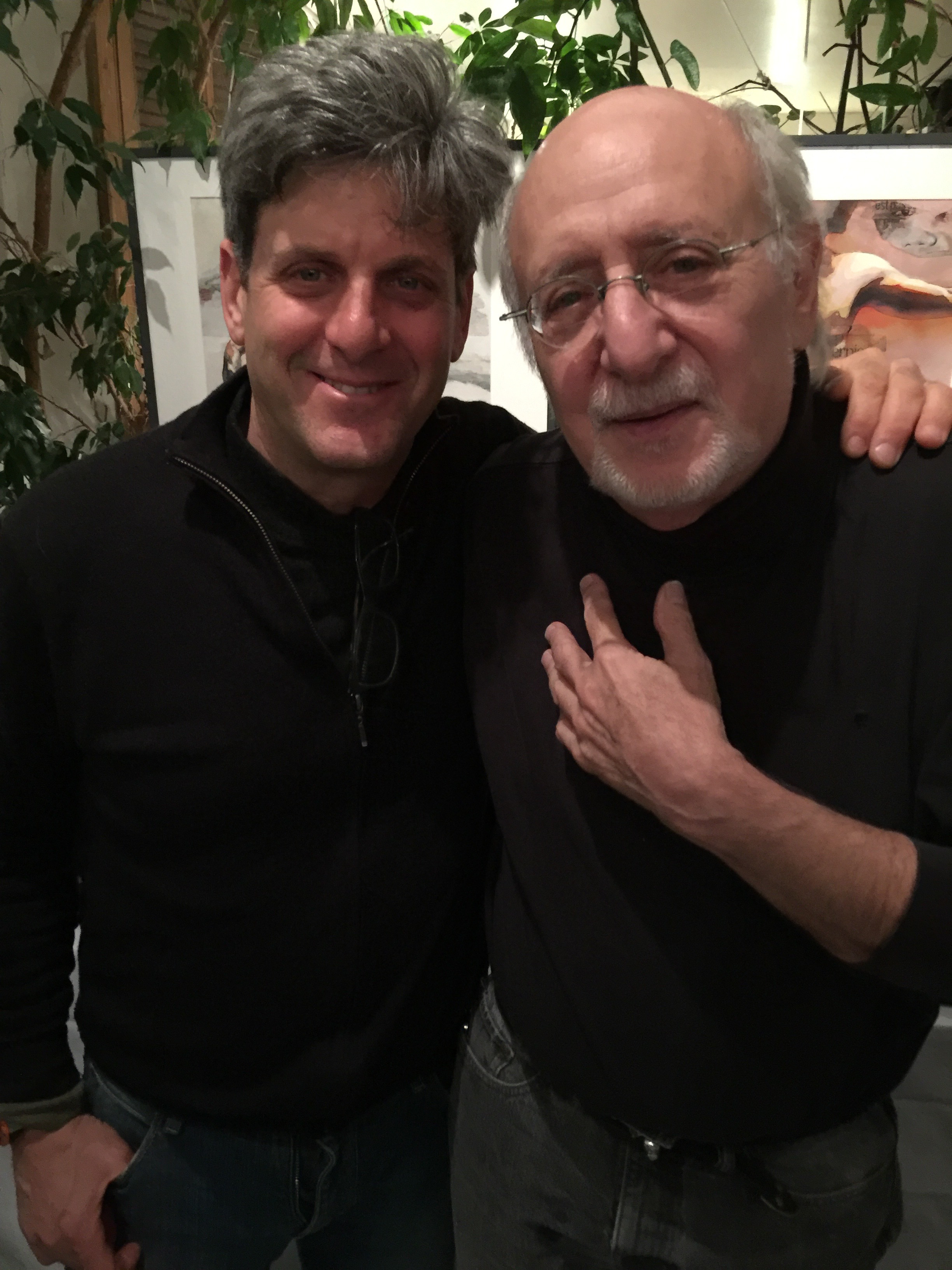

Further testament of my affinity for the French artistic tradition was my selection by the Société Nationale des Beaux-Arts (SNBA) to exhibit two sculptures at the Louvre in 2016 as part of the American delegation. In 2020, I also exhibited my work at the Salon des Indépendants at the Grand Palais within the framework of Art Capital. I’ve been invited back to the Louvre next year to participate in SNBA’s 160th Anniversary Exhibit, where I will heading the American delegation.
This past week, I received official notice that I received a medal of honor from the Académie des Arts, Sciences et Lettres in France, a prestigious association established in 1915. The award is given to artists who (I quote) “by their talent and their work, participate in the brilliance of the culture in the artistic, literary and scientific domains in France and all over the world.” The award ceremony will be held in February 2021 at the Paris Opera House, accompanied by an exhibit of my sculptures.
Could you share some other precious memories as a lover of Paris?
For those readers who have seen Woody Allen’s “Midnight in Paris” you’ll appreciate this story. I often romanticize about living during the period depicted in the movie. I had the opportunity to live my own Midnight in Paris on several occasions during my openings at Dorothy’s Gallery, attended by expats, artists, writers and curators. My home base was the apartment of my friend and neighbor Mikhail Baryshnikov, which allowed me to stay in Paris with the ease of being a resident. Very often the celebrations went into the wee hours of the morning, as I traversed Paris to different art venues, artist lofts, pop-up galleries, cafes and walks along the Seine, ultimately going to sleep at sunrise. It is these experiences that make Paris the quintessential venue to exhibit my work and to be a part the art culture that fills my soul with a joyous lightness of being.
One of my favorite museums in Paris is the Zadkin museum. It’s off the beaten track, and not listed in many of guides. What makes it even more difficult to visit is that the museum does not abide by its opening hours, so half the time I arrive at the museum’s doorstep only to find it closed. The museum is in a lovely residential section of Paris, near the Luxembourg Gardens. There are big iron gates protecting the homes next to the museum, with peak holes to get a glimpse of what lies behind. One of my visits was perfectly timed to coincide with an elegant elderly woman exiting her home when the museum was closed. When the gate opened I had a peak at what looked like a large sculpture in her garden. I politely asked if she knew when the museum would open next, and if the sculpture in her garden was a Picasso, to which she replied that it was. I then told her that I was also a sculptor, and boldly asked if could see the Picasso close up. The woman said that she was on her way to the bakery to buy bread for a dinner party that evening, but if I were to wait for her return she’d allow me to visit. What unfolded were not only close-up views of the Picasso bronze “Goat” but also a tour of her house, where I saw a magnificent Brancusi “Pogony” in high polished bronze painted in Mediterranean blue. I saw photos with her and these same artists she had befriended as a young woman. She even had a rare photo she had taken of Picasso painting in his Venetian striped shirt, a brush in one hand and a cigarette in the other. We became instant friends, and an invitation to attend her dinner party followed. Indeed it was a fantastic evening and a serendipitous encounter I’ll never forget.
Most artists are uniquely invested in art from a young age, but you also have a background in business, and worked for Amazon in its early days. How has this helped you “promote” yourself as an artist?
Indeed, being a “renaissance man” has enabled me to promote myself as an artist; Most artists who are purely creative have a hard time with marketing themselves, pricing their work, negotiating contracts with their gallery, and developing a relationship driven collector base to secure commissions. Fortunately, the business acumen I’ve gained, with start-ups as well as Fortune 500 companies, has enabled me to maturely navigate all of the above issues. It’s also enabled me to partner with Elegant Century Art (ECA), which specializes in works of the 19th and 20th Century, including Impressionist and Modern Masters. ECA have sold and served as consultants for sales of works by Monet, Picasso and Modigliani, among others. I’m thrilled to add a new dimension to my art career by my association with ECA.
The other benefit of having a business background is that throughout my career, I’ve been able to integrate the creative side of my fine art career into the marketing of commercial products. My father owned several toy companies, including View-Master, the 3-D story telling device, and Ideal Toys, the makers of Erector Sets and Magnadoodle, the magnetic drawing board. I had the wonderful opportunity to work with my Dad early in my career, which in retrospect, is a highly creative field that gave me the chance to bring to market my own inventions to millions of kids globally. When I worked at Amazon, it was to help them launch their Toy, Video Game and Baby divisions, and introduce video streaming to the website. It was the beginning of ecommerce and technological breakthroughs in a highly charged, creative, think out of-the-box work environment.
The past several years, I’ve also been engaged in activities that foster human rights and equality through the development and distribution of solar & wind energy products to help the 1 billion plus people around the globe who live off-grid. I recently consulted for Little Sun; the makers of portable solar lights and chargers, whose founder Olafur Eliasson took his sculpting aesthetic to the lighting category. I was also CEO of Mpowerd, Inc. where I helped design, manufacture and distribute over 2 million solar powered lights. I take this passion to do “good, ” to my profession as an artist. I believe that beautiful art can be a great unifier and influencer, crossing all cultural boundaries, to bring positive change to the world.

Finally, would you share with us the ancient secret of the “Triangle Technique”?
When I first went to sculpt in Pietrasanta, Italy, about ten years ago, I decided that I wanted to learn as much as I could, even though I’d already been sculpting for almost fifty years. It was a bit intimidating the first day I walked into the same studio where Michelangelo had sculpted 500 years prior. Well, the reality of where I was sunk in quickly. The owner greeted me by telling me that I was not to bother any of the Italian artisans who were there to produce commissioned work, on strict timelines, ranging from the Vatican to Damien Hirst. I was also told that same day by the owner, after she observed how I worked, that she “hated the way my sculpting sounded.” To put this in context, I had learned the “line technique” from all of my American sculpting instructors…a methodology used to carve in a straight line, chipping away stone fragments along the way with a frequency of seven consecutive taps of the chisel, before taking a break to regain one’s strength. I was told that the “right” way to sculpt, in a method dating back to Michelangelo, was to use the Italian triangle technique, which requires using the chisel to tap three points of an imaginary triangle, about an inch apart, which if done correctly, will cause the stone in the middle of the triangle to fall off. In summary, the sound of 7 taps versus 3 taps of the chisel is very different, and my technique was clearly annoying the owner of the studio.
It took me a month to master the triangle technique. The owner ended up bending, and assigned me to Leonardo, an artisan who took me under his wings. I needed to re-learn, re-wire my brain and muscle memory to adjust to a new way of sculpting. At the end of my 6-week stay in Italy I was the first sculptor to arrive to the studio on a Saturday morning. With all the noise of chiseling, little did I know that the owner had arrived and had been shouldering me. When I turned around and saw her, she shouted out, “YOU GOT IT.” I was overjoyed!
The funny thing is that after leaving Pietrasanta I drove to Paris to attend the opening of one of my exhibits. I had free time to go to the Louvre and study Michelangelo’s “Captive” (pictured below). I was pleasantly surprised when I studied Michelangelo’s technique to discover that the “Slave” rose from an unfinished stone base with clear delineations that Michelangelo also used the line technique to ruff out his stones. This realization was a great eye opener and gave me the confidence that going forward I could use both the line and triangle techniques with the knowledge that the great master was proficient at both methodologies.

Scott, we come full circle back to Michelangelo! Thank you for this wonderful anecdote. It has been a pleasure getting to know your work.
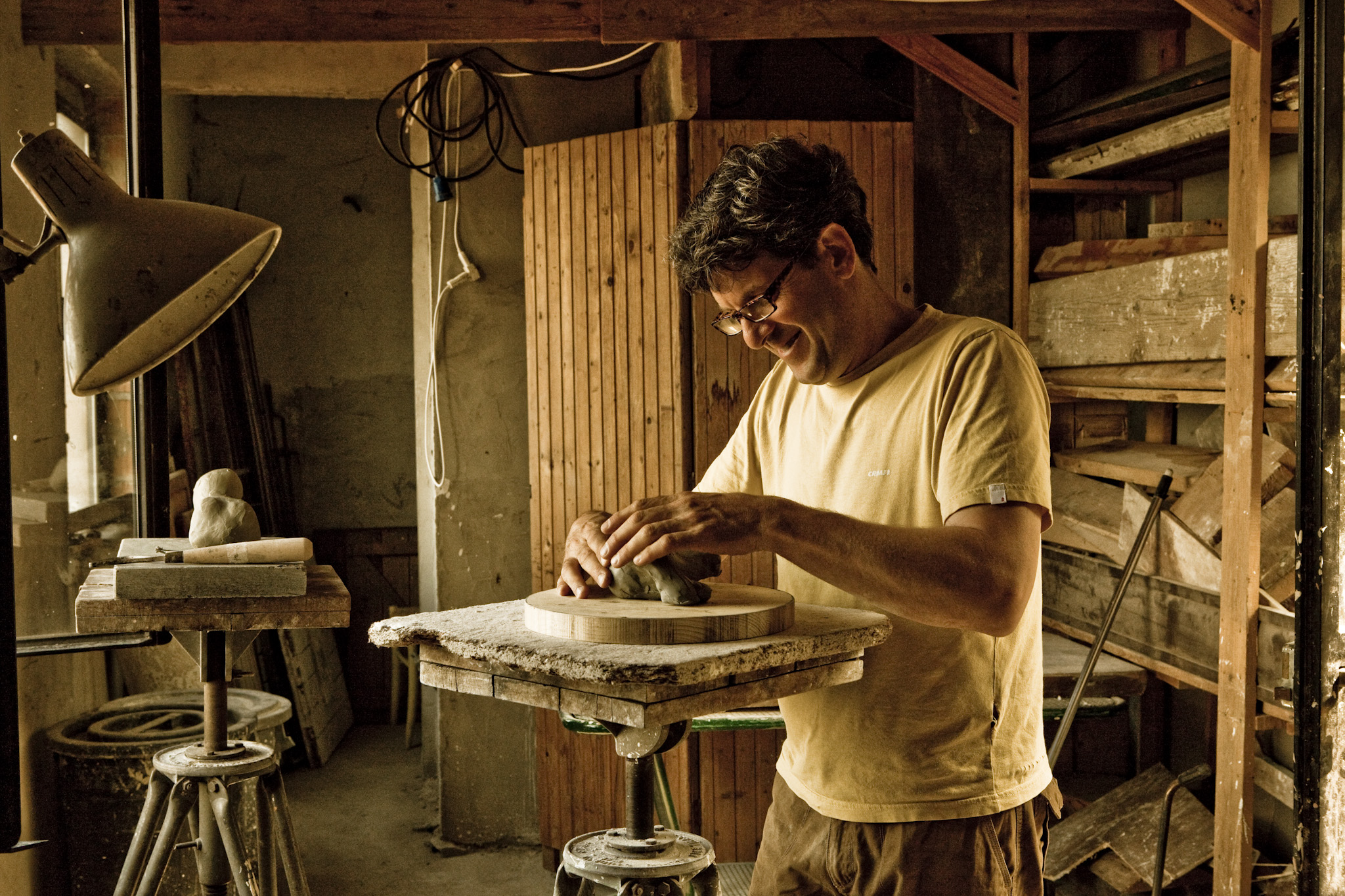
For further information on Scott Kling, consult www.scottklingsculpture.com




